#scolopax minor
Text

American Woodcock
63 notes
·
View notes
Photo
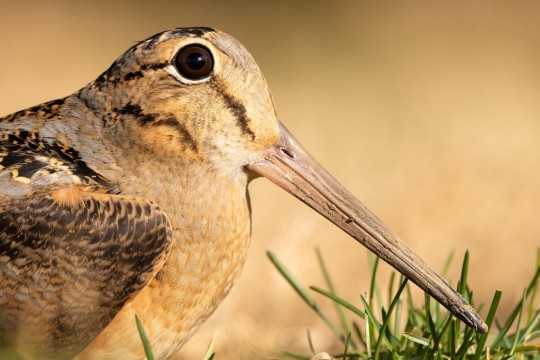
American Woodcock (Scolopax minor)
© Ryan Sanderson
269 notes
·
View notes
Text
Wait! I got a tiny bit of bad video of that woodcock with the phone! And of course I’m going to subject you to it.
189 notes
·
View notes
Text

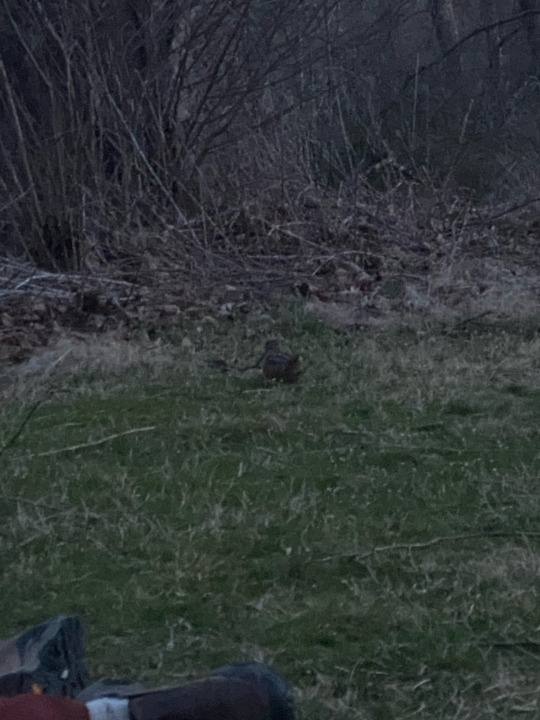

American Woodcock, my lifer who landed literally right next to our group (~15 people) while we were waiting to watch their display flights.
Virginia, March 2024.
#birds#bird photography#American Woodcock#AMWO#charadriiformes#scolopacidae#scolopax minor#lifer!#also please excuse the phone pictures i didn’t bring my camera
5 notes
·
View notes
Text
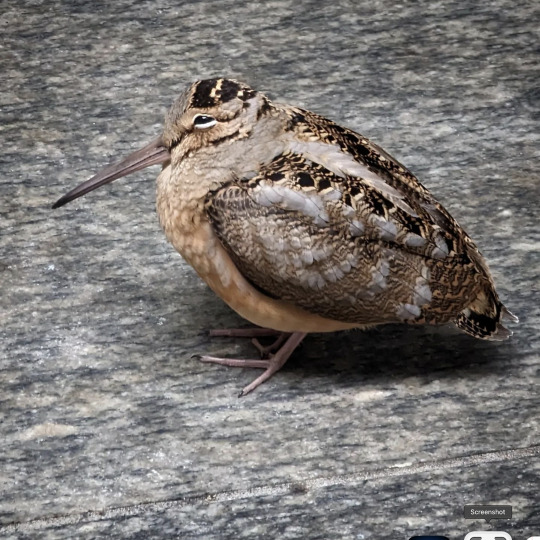
Here is an odd sight for NYC. I hope the little one is just taking a rest on E51 Street. American woodcock (Scolopax minor)
#American Woodcock#Woodcock#Scolopax minor#birds#birding#NYC birding#NYC birds#Manhattan#NYC#New York City#New York#Spotify
8 notes
·
View notes
Text

2 notes
·
View notes
Photo

A new variant has been added!
American Woodcock (Scolopax minor)
© John Livzey Ridgway
It hatches from broad, common, dark, daytime, dense, distinctive, eastern, goofy, high, huge, long, loud, nasal, open, outer, plain, plump, rotund, secretive, and wooded eggs.
squawkoverflow - the ultimate bird collecting game
🥚 hatch ❤️ collect 🤝 connect
0 notes
Text
Round 2 Group 1
American kestrel - Falco sparverius

American woodcock - Scolopax minor

Black-capped chickadee - Poecile atricapillus

Bufflehead - Bucephala albeola

Please reblog with the bird you voted for and why!
666 notes
·
View notes
Note
I had a dream where I saw an american woodcock and sent you a photo to confirm what it was
YOU NEED TO MAKE THIS DREAM A REALITY!!!
In the meantime...
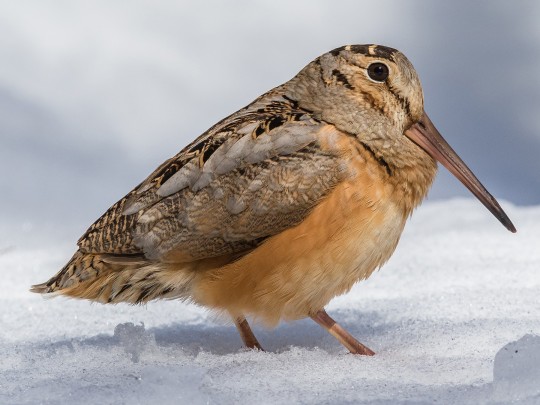
American Woodcock (Scolopax minor), family Scolopacidae, order Charadriiformes, found in and near woodlands in the Eastern and central US and southern Canada
Also called the Timberdoodle or Bogsucker.
photograph by Louis Brodieur
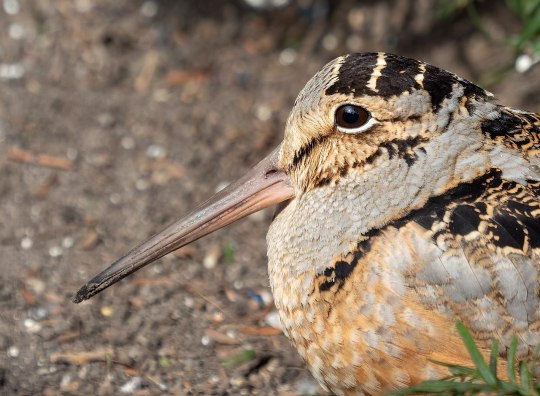
photograph by Bill Byrne
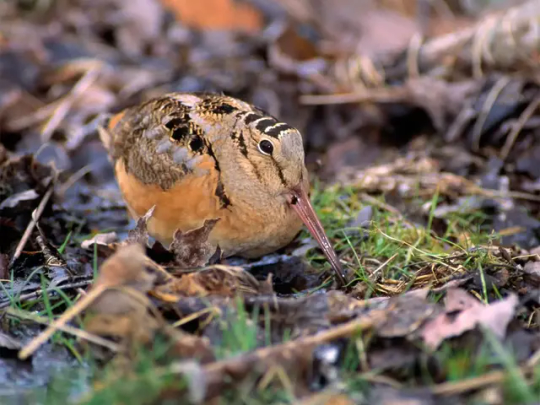
photograph by Rhododendrites
#scolopax#scolopacidae#shorebird#charadriiformes#woodcock#bird#ornithology#animals#nature#north america
320 notes
·
View notes
Text
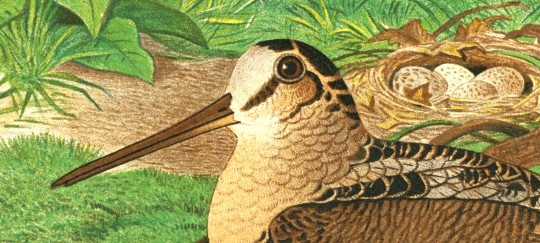
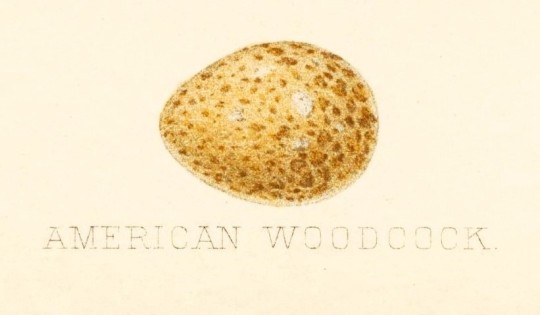
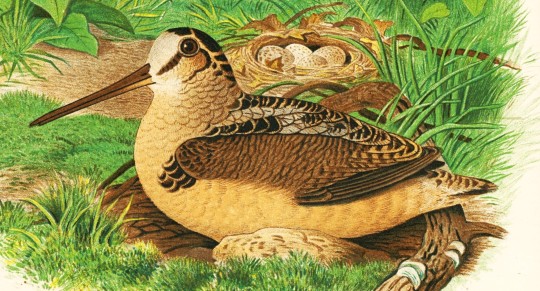

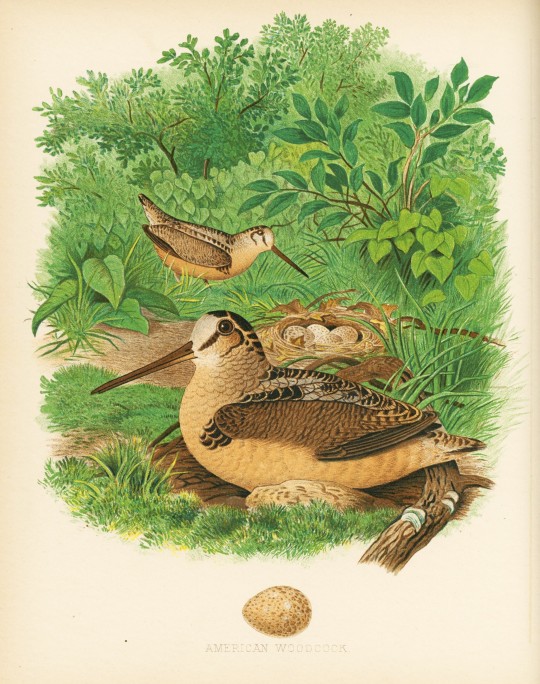
Feathursday Woodcocks!
It may be Fat Bear Week, but for us it's also Dancing Woodcock Week! The American Woodcock (Scolopax minor), fairly common in our area during the summer and fall, is well known for is rocking dance behavior. No one is quite certain why they do this, but it has been conjectured to be foraging behavior to coax invertebrates to the surface, or alternatively to indicate to predators that they are aware of their presence. Both seem like pretty lame reasons to us. We just think they've got a groove going on. It's probably why one of their several colloquial names is timberdoodle.
Our Woodcocks are chromolithographs from Nests and Eggs of Birds of the United States by Thomas G. Gentry and published by J. A. Wagenseller of Philadelphia in 1882, which includes chromolithographs of around 50 paintings of North American birds, eggs, and nests by the American naturalist painter Edwin Sheppard.
We recently learned that not only do they dance, but they sing too!
youtube
youtube

View other posts that include American Woodcocks.
View more posts from Nests and Eggs.
View more Feathursday posts.
#Feathursday#American woodcock#Nests and Eggs of Birds of the United States#Thomas G. Gentry#Edwin Sheppard#J. A. Wagenseller#chromolithographs#Yay chromoliths!#birds#birbs!#Youtube
84 notes
·
View notes
Photo
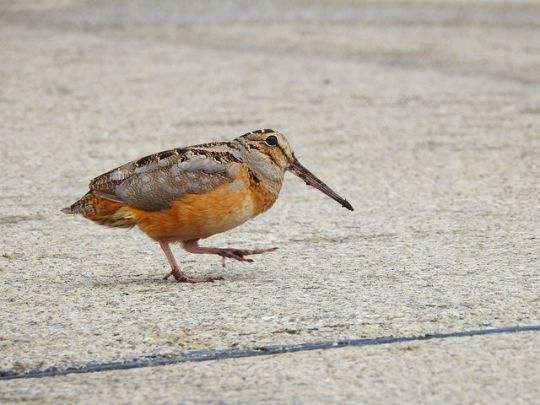
American Woodcock
95 notes
·
View notes
Text

American woodcocks (Scolopax minor) —also known as timberdoodles, bogsuckers, and Labrador twisters— are found in the eastern half of North America. Their peculiar-looking eye placement gives them an expansive visual field, and their long beaks are perfect for probing through soil for the invertebrates that make up most of their diet.
(ref)
#avianaugust2022#avianaugust#birds#woodcock#timberdoodle#animal art#id in alt#apparently lots of them winter in north AL but i can't recall seeing any irl ):#will have to be on the lookout this year!
462 notes
·
View notes
Text
I Love Dick And Balls




The American woodcock (Scolopax minor), sometimes colloquially referred to as the timberdoodle,[2] is a small shorebird species found primarily in the eastern half of North America. Woodcocks spend most of their time on the ground in brushy, young-forest habitats, where the birds' brown, black, and gray plumage provides excellent camouflage.
The American woodcock is the only species of woodcock inhabiting North America.[3] Although classified with the sandpipers and shorebirds in the family Scolopacidae, the American woodcock lives mainly in upland settings. Its many folk names include timberdoodle, bogsucker, night partridge, brush snipe, hokumpoke, and becasse.[4]
The population of the American woodcock has fallen by an average of slightly more than 1% annually since the 1960s. Most authorities attribute this decline to a loss of habitat caused by forest maturation and urban development. Because of the male woodcock's unique, beautiful courtship flights, the bird is welcomed as a harbinger of spring in northern areas. It is also a popular game bird, with about 540,000 killed annually by some 133,000 hunters in the U.S.[5]
In 2008, wildlife biologists and conservationists released an American woodcock conservation plan presenting figures for the acreage of early successional habitat that must be created and maintained in the U.S. and Canada to stabilize the woodcock population at current levels, and to return it to 1970s densities.[6]
Description
The American woodcock has a plump body, short legs, a large, rounded head, and a long, straight prehensile bill. Adults are 10 to 12 inches (25 to 30 cm) long and weigh 5 to 8 ounces (140 to 230 g).[7] Females are considerably larger than males.[8] The bill is 2.5 to 2.8 inches (6.4 to 7.1 cm) long.[4] Wingspans range from 16.5 to 18.9 inches (42 to 48 cm).[9]
Illustration of American woodcock head and wing feathers
Woodcock, with attenuate primaries, natural size, 1891
The plumage is a cryptic mix of different shades of browns, grays, and black. The chest and sides vary from yellowish-white to rich tans.[8] The nape of the head is black, with three or four crossbars of deep buff or rufous.[4] The feet and toes, which are small and weak, are brownish gray to reddish brown.[8] Woodcocks have large eyes located high in their heads, and their visual field is probably the largest of any bird, 360° in the horizontal plane and 180° in the vertical plane.[10]
The woodcock uses its long, prehensile bill to probe in the soil for food, mainly invertebrates and especially earthworms. A unique bone-and-muscle arrangement lets the bird open and close the tip of its upper bill, or mandible, while it is sunk in the ground. Both the underside of the upper mandible and the long tongue are rough-surfaced for grasping slippery prey.[4]
Taxonomy
The genus Scolopax was introduced in 1758 by the Swedish naturalist Carl Linnaeus in the tenth edition of his Systema Naturae.[11] The genus name is Latin for a snipe or woodcock.[12] The type species is the Eurasian woodcock (Scolopax rusticola).[13]
Distribution and habitat
Woodcocks inhabit forested and mixed forest-agricultural-urban areas east of the 98th meridian. Woodcock have been sighted as far north as York Factory, Manitoba, and east to Labrador and Newfoundland. In winter, they migrate as far south as the Gulf Coast of the United States and Mexico.[8]
The primary breeding range extends from Atlantic Canada (Nova Scotia, Prince Edward Island, and New Brunswick) west to southeastern Manitoba, and south to northern Virginia, western North Carolina, Kentucky, northern Tennessee, northern Illinois, Missouri, and eastern Kansas. A limited number breed as far south as Florida and Texas. The species may be expanding its distribution northward and westward.[8]
After migrating south in autumn, most woodcocks spend the winter in the Gulf Coast and southeastern Atlantic Coast states. Some may remain as far north as southern Maryland, eastern Virginia, and southern New Jersey. The core of the wintering range centers on Louisiana, Mississippi, Alabama, and Georgia.[8] Based on the Christmas Bird Count results, winter concentrations are highest in the northern half of Alabama.
American woodcocks live in wet thickets, moist woods, and brushy swamps.[3] Ideal habitats feature early successional habitat and abandoned farmland mixed with forest. In late summer, some woodcocks roost on the ground at night in large openings among sparse, patchy vegetation.[8]Courtship/breeding habitats include forest openings, roadsides, pastures, and old fields from which males call and launch courtship flights in springtime. Nesting habitats include thickets, shrubland, and young to middle-aged forest interspersed with openings. Feeding habitats have moist soil and feature densely growing young trees such as aspen (Populus spp.), birch (Betula spp.), and mixed hardwoods less than 20 years of age, and shrubs, particularly alder (Alnus spp.). Roosting habitats are semiopen sites with short, sparse plant cover, such as blueberry barrens, pastures, and recently heavily logged forest stands.[8]
Migration
Woodcocks migrate at night. They fly at low altitudes, individually or in small, loose flocks. Flight speeds of migrating birds have been clocked at 16 to 28 mi/h (26 to 45 km/h). However, the slowest flight speed ever recorded for a bird, 5 mi/h (8 km/h), was recorded for this species.[14] Woodcocks are thought to orient visually using major physiographic features such as coastlines and broad river valleys.[8] Both the autumn and spring migrations are leisurely compared with the swift, direct migrations of many passerine birds.
In the north, woodcocks begin to shift southward before ice and snow seal off their ground-based food supply. Cold fronts may prompt heavy southerly flights in autumn. Most woodcocks start to migrate in October, with the major push from mid-October to early November.[15] Most individuals arrive on the wintering range by mid-December. The birds head north again in February. Most have returned to the northern breeding range by mid-March to mid-April.[8]
Migrating birds' arrival at and departure from the breeding range is highly irregular. In Ohio, for example, the earliest birds are seen in February, but the bulk of the population does not arrive until March and April. Birds start to leave for winter by September, but some remain until mid-November.[16]
Behavior and ecology
Food and feeding
American woodcock catching a worm in a New York City park
Woodcocks eat mainly invertebrates, particularly earthworms (Oligochaeta). They do most of their feeding in places where the soil is moist. They forage by probing in soft soil in thickets, where they usually remain well-hidden. Other items in their diet include insect larvae, snails, centipedes, millipedes, spiders, snipe flies, beetles, and ants. A small amount of plant food is eaten, mainly seeds.[8] Woodcocks are crepuscular, being most active at dawn and dusk.
Breeding
In spring, males occupy individual singing grounds, openings near brushy cover from which they call and perform display flights at dawn and dusk, and if the light levels are high enough, on moonlit nights. The male's ground call is a short, buzzy peent. After sounding a series of ground calls, the male takes off and flies from 50 to 100 yd (46 to 91 m) into the air. He descends, zigzagging and banking while singing a liquid, chirping song.[8] This high spiralling flight produces a melodious twittering sound as air rushes through the male's outer primary wing feathers.[17]
Males may continue with their courtship flights for as many as four months running, sometimes continuing even after females have already hatched their broods and left the nest. Females, known as hens, are attracted to the males' displays. A hen will fly in and land on the ground near a singing male. The male courts the female by walking stiff-legged and with his wings stretched vertically, and by bobbing and bowing. A male may mate with several females. The male woodcock plays no role in selecting a nest site, incubating eggs, or rearing young. In the primary northern breeding range, the woodcock may be the earliest ground-nesting species to breed.[8]
Woodcock chick in nest
Downy young are already well-camouflaged.
The hen makes a shallow, rudimentary nest on the ground in the leaf and twig litter, in brushy or young-forest cover usually within 150 yd (140 m) of a singing ground.[4] Most hens lay four eggs, sometimes one to three. Incubation takes 20 to 22 days.[3] The down-covered young are precocial and leave the nest within a few hours of hatching.[8] The female broods her young and feeds them. When threatened, the fledglings usually take cover and remain motionless, attempting to escape detection by relying on their cryptic coloration. Some observers suggest that frightened young may cling to the body of their mother, that will then take wing and carry the young to safety.[18] Woodcock fledglings begin probing for worms on their own a few days after hatching. They develop quickly and can make short flights after two weeks, can fly fairly well at three weeks, and are independent after about five weeks.[3]
The maximum lifespan of adult American woodcock in the wild is 8 years.[19]
Rocking behavior
American woodcocks sometimes rock back and forth as they walk, perhaps to aid their search for worms.
American woodcocks occasionally perform a rocking behavior where they will walk slowly while rhythmically rocking their bodies back and forth. This behavior occurs during foraging, leading ornithologists such as Arthur Cleveland Bent and B. H. Christy to theorize that this is a method of coaxing invertebrates such as earthworms closer to the surface.[20] The foraging theory is the most common explanation of the behavior, and it is often cited in field guides.[21]
An alternative theory for the rocking behavior has been proposed by some biologists, such as Bernd Heinrich. It is thought that this behavior is a display to indicate to potential predators that the bird is aware of them.[22] Heinrich notes that some field observations have shown that woodcocks will occasionally flash their tail feathers while rocking, drawing attention to themselves. This theory is supported by research done by John Alcock who believes this is a type of aposematism.[23]
Population status
How many woodcock were present in eastern North America before European settlement is unknown. Colonial agriculture, with its patchwork of family farms and open-range livestock grazing, probably supported healthy woodcock populations.[4]
The woodcock population remained high during the early and mid-20th century, after many family farms were abandoned as people moved to urban areas, and crop fields and pastures grew up in brush. In recent decades, those formerly brushy acres have become middle-aged and older forest, where woodcock rarely venture, or they have been covered with buildings and other human developments. Because its population has been declining, the American woodcock is considered a "species of greatest conservation need" in many states, triggering research and habitat-creation efforts in an attempt to boost woodcock populations.
Population trends have been measured through springtime breeding bird surveys, and in the northern breeding range, springtime singing-ground surveys.[8] Data suggest that the woodcock population has fallen rangewide by an average of 1.1% yearly over the last four decades.[6]
Conservation
The American woodcock is not considered globally threatened by the IUCN. It is more tolerant of deforestation than other woodcocks and snipes; as long as some sheltered woodland remains for breeding, it can thrive even in regions that are mainly used for agriculture.[1][24] The estimated population is 5 million, so it is the most common sandpiper in North America.[17]
The American Woodcock Conservation Plan presents regional action plans linked to bird conservation regions, fundamental biological units recognized by the U.S. North American Bird Conservation Initiative. The Wildlife Management Institute oversees regional habitat initiatives intended to boost the American woodcock's population by protecting, renewing, and creating habitat throughout the species' range.[6]
Creating young-forest habitat for American woodcocks helps more than 50 other species of wildlife that need early successional habitat during part or all of their lifecycles. These include relatively common animals such as white-tailed deer, snowshoe hare, moose, bobcat, wild turkey, and ruffed grouse, and animals whose populations have also declined in recent decades, such as the golden-winged warbler, whip-poor-will, willow flycatcher, indigo bunting, and New England cottontail.[25]
Leslie Glasgow,[26] the assistant secretary of the Interior for Fish, Wildlife, Parks, and Marine Resources from 1969 to 1970, wrote a dissertation through Texas A&M University on the woodcock, with research based on his observations through the Louisiana State University (LSU) Agricultural Experiment Station. He was an LSU professor from 1948 to 1980 and an authority on wildlife in the wetlands.[27]
References
BirdLife International (2020). "Scolopax minor". IUCN Red List of Threatened Species. 2020: e.T22693072A182648054. doi:10.2305/IUCN.UK.2020-3.RLTS.T22693072A182648054.en. Retrieved November 13, 2021.
The American Woodcock Today | Woodcock population and young forest habitat management. Timberdoodle.org. Retrieved on 2013-04-03.
Kaufman, Kenn (1996). Lives of North American Birds. Houghton Mifflin, pp. 225–226, ISBN 0618159886.
Sheldon, William G. (1971). Book of the American Woodcock. University of Massachusetts.
Cooper, T. R. & K. Parker (2009). American woodcock population status, 2009. U.S. Fish and Wildlife Service, Laurel, Maryland.
Kelley, James; Williamson, Scot & Cooper, Thomas, eds. (2008). American Woodcock Conservation Plan: A Summary of and Recommendations for Woodcock Conservation in North America.
Smith, Christopher (2000). Field Guide to Upland Birds and Waterfowl. Wilderness Adventures Press, pp. 28–29, ISBN 1885106203.
Keppie, D. M. & R. M. Whiting Jr. (1994). American Woodcock (Scolopax minor), The Birds of North America.
"American Woodcock Identification, All About Birds, Cornell Lab of Ornithology". www.allaboutbirds.org. Retrieved September 27, 2020.
Jones, Michael P.; Pierce, Kenneth E.; Ward, Daniel (2007). "Avian vision: a review of form and function with special consideration to birds of prey". Journal of Exotic Pet Medicine. 16 (2): 69. doi:10.1053/j.jepm.2007.03.012.
Linnaeus, Carl (1758). Systema Naturae per regna tria naturae, secundum classes, ordines, genera, species, cum characteribus, differentiis, synonymis, locis (in Latin). Vol. 1 (10th ed.). Holmiae (Stockholm): Laurentii Salvii. p. 145.
Jobling, James A (2010). The Helm Dictionary of Scientific Bird Names. London: Christopher Helm. p. 351. ISBN 978-1-4081-2501-4.
Peters, James Lee, ed. (1934). Check-List of Birds of the World. Vol. 2. Cambridge, Massachusetts: Harvard University Press. p. 278.
Amazing Bird Records. Trails.com (2010-07-27). Retrieved on 2013-04-03.
Sepik, G. F. and E. L. Derleth (1993). Habitat use, home range size, and patterns of moves of the American Woodcock in Maine. in Proc. Eighth Woodcock Symp. (Longcore, J. R. and G. F. Sepik, eds.) Biol. Rep. 16, U.S. Fish and Wildlife Service, Washington, D.C.
Ohio Ornithological Society (2004). Annotated Ohio state checklist Archived 2004-07-18 at the Wayback Machine.
O'Brien, Michael; Crossley, Richard & Karlson, Kevin (2006). The Shorebird Guide. Houghton Mifflin Harcourt, pp. 444–445, ISBN 0618432949.
Mann, Clive F. (1991). "Sunda Frogmouth Batrachostomus cornutus carrying its young" (PDF). Forktail. 6: 77–78. Archived from the original (PDF) on August 28, 2008.
Wasser, D. E.; Sherman, P. W. (2010). "Avian longevities and their interpretation under evolutionary theories of senescence". Journal of Zoology. 280 (2): 103. doi:10.1111/j.1469-7998.2009.00671.x.
Bent, A. C. (1927). "Life histories of familiar North American birds: American Woodcock, Scalopax minor". United States National Museum Bulletin. Smithsonian Institution. 142 (1): 61–78.
"American Woodcock". Audubon. National Audubon Society. Retrieved October 5, 2023.
Heinrich, Bernd (March 1, 2016). "Note on the Woodcock Rocking Display". Northeastern Naturalist. 23 (1): N4–N7.
Alcock, John (2013). Animal behavior: an evolutionary approach (10th ed.). Sunderland (Mass.): Sinauer. p. 522. ISBN 0878939660.
Henninger, W. F. (1906). "A preliminary list of the birds of Seneca County, Ohio" (PDF). Wilson Bulletin. 18 (2): 47–60.
the Woodcock Management Plan. Timberdoodle.org. Retrieved on 2013-04-03.
[1]Paul Y. Burns (June 13, 2008). "Leslie L. Glasgow". lsuagcdenter.com. Retrieved October 21, 2014.
Further readingChoiniere, Joe (2006). Seasons of the Woodcock: The secret life of a woodland shorebird. Sanctuary 45(4): 3–5. Sepik, Greg F.; Owen, Roy & Coulter, Malcolm (1981). A Landowner's Guide to Woodcock Management in the Northeast, Misc. Report 253, Maine Agricultural Experiment Station, University of Maine.
External linksAmerican woodcock species account – Cornell Lab of Ornithology American Woodcock – Scolopax minor – USGS Patuxent Bird Identification Infocenter American Woodcock Bird Sound Rite of Spring – Illustrated account of the phenomenal courtship flight of the male American woodcock American Woodcock videos[permanent dead link] on the Internet Bird Collection Photo-High Res; Article – www.fws.gov–"Moosehorn National Wildlife Refuge", photo gallery and analysis American Woodcock Conservation Plan A Summary of and Recommendations for Woodcock Conservation in North America Timberdoodle.org: the Woodcock Management Plan Sepik, Greg F.; Ray B. Owen Jr.; Malcolm W. Coulter (July 1981). "Landowner's Guide to Woodcock Management in the Northeast". Maine Agricultural Experiment Station Miscellaneous Report 253. vte
Sandpipers (family: Scolopacidae)
Taxon identifiers Wikidata: Q694319 Wikispecies: Scolopax minor ABA: amewoo ADW: Scolopax_minor ARKive: scolopax-minor Avibase: F4829920F1710E56 BirdLife: 22693072 BOLD: 10164 CoL: 6XXHP BOW: amewoo eBird: amewoo EoL: 45509171 Euring: 5310 FEIS: scmi Fossilworks: 129789 GBIF: 2481695 GNAB: american-woodcock iNaturalist: 3936 IRMNG: 10836458 ITIS: 176580 IUCN: 22693072 NatureServe: 2.105226 NCBI: 56299 ODNR: american-woodcock WoRMS: 159027 Xeno-canto: Scolopax-minor
Categories:IUCN Red List least concern speciesScolopaxNative birds of the Eastern United StatesNative birds of Eastern CanadaBirds of MexicoBirds described in 1789Taxa named by Johann Friedrich Gmelin
The American woodcock (Scolopax minor), sometimes colloquially referred to as the timberdoodle,[2] is a small shorebird species found primarily in the eastern half of North America. Woodcocks spend most of their time on the ground in brushy, young-forest habitats, where the birds' brown, black, and gray plumage provides excellent camouflage.
The American woodcock is the only species of woodcock inhabiting North America.[3] Although classified with the sandpipers and shorebirds in the family Scolopacidae, the American woodcock lives mainly in upland settings. Its many folk names include timberdoodle, bogsucker, night partridge, brush snipe, hokumpoke, and becasse.[4]
The population of the American woodcock has fallen by an average of slightly more than 1% annually since the 1960s. Most authorities attribute this decline to a loss of habitat caused by forest maturation and urban development. Because of the male woodcock's unique, beautiful courtship flights, the bird is welcomed as a harbinger of spring in northern areas. It is also a popular game bird, with about 540,000 killed annually by some 133,000 hunters in the U.S.[5]
In 2008, wildlife biologists and conservationists released an American woodcock conservation plan presenting figures for the acreage of early successional habitat that must be created and maintained in the U.S. and Canada to stabilize the woodcock population at current levels, and to return it to 1970s densities.[6]
Description
The American woodcock has a plump body, short legs, a large, rounded head, and a long, straight prehensile bill. Adults are 10 to 12 inches (25 to 30 cm) long and weigh 5 to 8 ounces (140 to 230 g).[7] Females are considerably larger than males.[8] The bill is 2.5 to 2.8 inches (6.4 to 7.1 cm) long.[4] Wingspans range from 16.5 to 18.9 inches (42 to 48 cm).[9]
Illustration of American woodcock head and wing feathers
Woodcock, with attenuate primaries, natural size, 1891
The plumage is a cryptic mix of different shades of browns, grays, and black. The chest and sides vary from yellowish-white to rich tans.[8] The nape of the head is black, with three or four crossbars of deep buff or rufous.[4] The feet and toes, which are small and weak, are brownish gray to reddish brown.[8] Woodcocks have large eyes located high in their heads, and their visual field is probably the largest of any bird, 360° in the horizontal plane and 180° in the vertical plane.[10]
The woodcock uses its long, prehensile bill to probe in the soil for food, mainly invertebrates and especially earthworms. A unique bone-and-muscle arrangement lets the bird open and close the tip of its upper bill, or mandible, while it is sunk in the ground. Both the underside of the upper mandible and the long tongue are rough-surfaced for grasping slippery prey.[4]
Taxonomy
The genus Scolopax was introduced in 1758 by the Swedish naturalist Carl Linnaeus in the tenth edition of his Systema Naturae.[11] The genus name is Latin for a snipe or woodcock.[12] The type species is the Eurasian woodcock (Scolopax rusticola).[13]
Distribution and habitat
Woodcocks inhabit forested and mixed forest-agricultural-urban areas east of the 98th meridian. Woodcock have been sighted as far north as York Factory, Manitoba, and east to Labrador and Newfoundland. In winter, they migrate as far south as the Gulf Coast of the United States and Mexico.[8]
The primary breeding range extends from Atlantic Canada (Nova Scotia, Prince Edward Island, and New Brunswick) west to southeastern Manitoba, and south to northern Virginia, western North Carolina, Kentucky, northern Tennessee, northern Illinois, Missouri, and eastern Kansas. A limited number breed as far south as Florida and Texas. The species may be expanding its distribution northward and westward.[8]
After migrating south in autumn, most woodcocks spend the winter in the Gulf Coast and southeastern Atlantic Coast states. Some may remain as far north as southern Maryland, eastern Virginia, and southern New Jersey. The core of the wintering range centers on Louisiana, Mississippi, Alabama, and Georgia.[8] Based on the Christmas Bird Count results, winter concentrations are highest in the northern half of Alabama.
American woodcocks live in wet thickets, moist woods, and brushy swamps.[3] Ideal habitats feature early successional habitat and abandoned farmland mixed with forest. In late summer, some woodcocks roost on the ground at night in large openings among sparse, patchy vegetation.[8]Courtship/breeding habitats include forest openings, roadsides, pastures, and old fields from which males call and launch courtship flights in springtime. Nesting habitats include thickets, shrubland, and young to middle-aged forest interspersed with openings. Feeding habitats have moist soil and feature densely growing young trees such as aspen (Populus spp.), birch (Betula spp.), and mixed hardwoods less than 20 years of age, and shrubs, particularly alder (Alnus spp.). Roosting habitats are semiopen sites with short, sparse plant cover, such as blueberry barrens, pastures, and recently heavily logged forest stands.[8]
Migration
Woodcocks migrate at night. They fly at low altitudes, individually or in small, loose flocks. Flight speeds of migrating birds have been clocked at 16 to 28 mi/h (26 to 45 km/h). However, the slowest flight speed ever recorded for a bird, 5 mi/h (8 km/h), was recorded for this species.[14] Woodcocks are thought to orient visually using major physiographic features such as coastlines and broad river valleys.[8] Both the autumn and spring migrations are leisurely compared with the swift, direct migrations of many passerine birds.
In the north, woodcocks begin to shift southward before ice and snow seal off their ground-based food supply. Cold fronts may prompt heavy southerly flights in autumn. Most woodcocks start to migrate in October, with the major push from mid-October to early November.[15] Most individuals arrive on the wintering range by mid-December. The birds head north again in February. Most have returned to the northern breeding range by mid-March to mid-April.[8]
Migrating birds' arrival at and departure from the breeding range is highly irregular. In Ohio, for example, the earliest birds are seen in February, but the bulk of the population does not arrive until March and April. Birds start to leave for winter by September, but some remain until mid-November.[16]
Behavior and ecology
Food and feeding
American woodcock catching a worm in a New York City park

Woodcocks eat mainly invertebrates, particularly earthworms (Oligochaeta). They do most of their feeding in places where the soil is moist. They forage by probing in soft soil in thickets, where they usually remain well-hidden. Other items in their diet include insect larvae, snails, centipedes, millipedes, spiders, snipe flies, beetles, and ants. A small amount of plant food is eaten, mainly seeds.[8] Woodcocks are crepuscular, being most active at dawn and dusk.
Breeding
In spring, males occupy individual singing grounds, openings near brushy cover from which they call and perform display flights at dawn and dusk, and if the light levels are high enough, on moonlit nights. The male's ground call is a short, buzzy peent. After sounding a series of ground calls, the male takes off and flies from 50 to 100 yd (46 to 91 m) into the air. He descends, zigzagging and banking while singing a liquid, chirping song.[8] This high spiralling flight produces a melodious twittering sound as air rushes through the male's outer primary wing feathers.[17]
Males may continue with their courtship flights for as many as four months running, sometimes continuing even after females have already hatched their broods and left the nest. Females, known as hens, are attracted to the males' displays. A hen will fly in and land on the ground near a singing male. The male courts the female by walking stiff-legged and with his wings stretched vertically, and by bobbing and bowing. A male may mate with several females. The male woodcock plays no role in selecting a nest site, incubating eggs, or rearing young. In the primary northern breeding range, the woodcock may be the earliest ground-nesting species to breed.[8]
Woodcock chick in nest
Downy young are already well-camouflaged.
The hen makes a shallow, rudimentary nest on the ground in the leaf and twig litter, in brushy or young-forest cover usually within 150 yd (140 m) of a singing ground.[4] Most hens lay four eggs, sometimes one to three. Incubation takes 20 to 22 days.[3] The down-covered young are precocial and leave the nest within a few hours of hatching.[8] The female broods her young and feeds them. When threatened, the fledglings usually take cover and remain motionless, attempting to escape detection by relying on their cryptic coloration. Some observers suggest that frightened young may cling to the body of their mother, that will then take wing and carry the young to safety.[18] Woodcock fledglings begin probing for worms on their own a few days after hatching. They develop quickly and can make short flights after two weeks, can fly fairly well at three weeks, and are independent after about five weeks.[3]
The maximum lifespan of adult American woodcock in the wild is 8 years.[19]
Rocking behavior
American woodcocks sometimes rock back and forth as they walk, perhaps to aid their search for worms.
American woodcocks occasionally perform a rocking behavior where they will walk slowly while rhythmically rocking their bodies back and forth. This behavior occurs during foraging, leading ornithologists such as Arthur Cleveland Bent and B. H. Christy to theorize that this is a method of coaxing invertebrates such as earthworms closer to the surface.[20] The foraging theory is the most common explanation of the behavior, and it is often cited in field guides.[21]
An alternative theory for the rocking behavior has been proposed by some biologists, such as Bernd Heinrich. It is thought that this behavior is a display to indicate to potential predators that the bird is aware of them.[22] Heinrich notes that some field observations have shown that woodcocks will occasionally flash their tail feathers while rocking, drawing attention to themselves. This theory is supported by research done by John Alcock who believes this is a type of aposematism.[23]
Population status
How many woodcock were present in eastern North America before European settlement is unknown. Colonial agriculture, with its patchwork of family farms and open-range livestock grazing, probably supported healthy woodcock populations.[4]
The woodcock population remained high during the early and mid-20th century, after many family farms were abandoned as people moved to urban areas, and crop fields and pastures grew up in brush. In recent decades, those formerly brushy acres have become middle-aged and older forest, where woodcock rarely venture, or they have been covered with buildings and other human developments. Because its population has been declining, the American woodcock is considered a "species of greatest conservation need" in many states, triggering research and habitat-creation efforts in an attempt to boost woodcock populations.
Population trends have been measured through springtime breeding bird surveys, and in the northern breeding range, springtime singing-ground surveys.[8] Data suggest that the woodcock population has fallen rangewide by an average of 1.1% yearly over the last four decades.[6]
Conservation
The American woodcock is not considered globally threatened by the IUCN. It is more tolerant of deforestation than other woodcocks and snipes; as long as some sheltered woodland remains for breeding, it can thrive even in regions that are mainly used for agriculture.[1][24] The estimated population is 5 million, so it is the most common sandpiper in North America.[17]
The American Woodcock Conservation Plan presents regional action plans linked to bird conservation regions, fundamental biological units recognized by the U.S. North American Bird Conservation Initiative. The Wildlife Management Institute oversees regional habitat initiatives intended to boost the American woodcock's population by protecting, renewing, and creating habitat throughout the species' range.[6]
Creating young-forest habitat for American woodcocks helps more than 50 other species of wildlife that need early successional habitat during part or all of their lifecycles. These include relatively common animals such as white-tailed deer, snowshoe hare, moose, bobcat, wild turkey, and ruffed grouse, and animals whose populations have also declined in recent decades, such as the golden-winged warbler, whip-poor-will, willow flycatcher, indigo bunting, and New England cottontail.[25]
Leslie Glasgow,[26] the assistant secretary of the Interior for Fish, Wildlife, Parks, and Marine Resources from 1969 to 1970, wrote a dissertation through Texas A&M University on the woodcock, with research based on his observations through the Louisiana State University (LSU) Agricultural Experiment Station. He was an LSU professor from 1948 to 1980 and an authority on wildlife in the wetlands.[27]
References
BirdLife International (2020). "Scolopax minor". IUCN Red List of Threatened Species. 2020: e.T22693072A182648054. doi:10.2305/IUCN.UK.2020-3.RLTS.T22693072A182648054.en. Retrieved November 13, 2021.
The American Woodcock Today | Woodcock population and young forest habitat management. Timberdoodle.org. Retrieved on 2013-04-03.
Kaufman, Kenn (1996). Lives of North American Birds. Houghton Mifflin, pp. 225–226, ISBN 0618159886.
Sheldon, William G. (1971). Book of the American Woodcock. University of Massachusetts.
Cooper, T. R. & K. Parker (2009). American woodcock population status, 2009. U.S. Fish and Wildlife Service, Laurel, Maryland.
Kelley, James; Williamson, Scot & Cooper, Thomas, eds. (2008). American Woodcock Conservation Plan: A Summary of and Recommendations for Woodcock Conservation in North America.
Smith, Christopher (2000). Field Guide to Upland Birds and Waterfowl. Wilderness Adventures Press, pp. 28–29, ISBN 1885106203.
Keppie, D. M. & R. M. Whiting Jr. (1994). American Woodcock (Scolopax minor), The Birds of North America.
"American Woodcock Identification, All About Birds, Cornell Lab of Ornithology". www.allaboutbirds.org. Retrieved September 27, 2020.
Jones, Michael P.; Pierce, Kenneth E.; Ward, Daniel (2007). "Avian vision: a review of form and function with special consideration to birds of prey". Journal of Exotic Pet Medicine. 16 (2): 69. doi:10.1053/j.jepm.2007.03.012.
Linnaeus, Carl (1758). Systema Naturae per regna tria naturae, secundum classes, ordines, genera, species, cum characteribus, differentiis, synonymis, locis (in Latin). Vol. 1 (10th ed.). Holmiae (Stockholm): Laurentii Salvii. p. 145.
Jobling, James A (2010). The Helm Dictionary of Scientific Bird Names. London: Christopher Helm. p. 351. ISBN 978-1-4081-2501-4.
Peters, James Lee, ed. (1934). Check-List of Birds of the World. Vol. 2. Cambridge, Massachusetts: Harvard University Press. p. 278.
Amazing Bird Records. Trails.com (2010-07-27). Retrieved on 2013-04-03.
Sepik, G. F. and E. L. Derleth (1993). Habitat use, home range size, and patterns of moves of the American Woodcock in Maine. in Proc. Eighth Woodcock Symp. (Longcore, J. R. and G. F. Sepik, eds.) Biol. Rep. 16, U.S. Fish and Wildlife Service, Washington, D.C.
Ohio Ornithological Society (2004). Annotated Ohio state checklist Archived 2004-07-18 at the Wayback Machine.
O'Brien, Michael; Crossley, Richard & Karlson, Kevin (2006). The Shorebird Guide. Houghton Mifflin Harcourt, pp. 444–445, ISBN 0618432949.
Mann, Clive F. (1991). "Sunda Frogmouth Batrachostomus cornutus carrying its young" (PDF). Forktail. 6: 77–78. Archived from the original (PDF) on August 28, 2008.
Wasser, D. E.; Sherman, P. W. (2010). "Avian longevities and their interpretation under evolutionary theories of senescence". Journal of Zoology. 280 (2): 103. doi:10.1111/j.1469-7998.2009.00671.x.
Bent, A. C. (1927). "Life histories of familiar North American birds: American Woodcock, Scalopax minor". United States National Museum Bulletin. Smithsonian Institution. 142 (1): 61–78.
"American Woodcock". Audubon. National Audubon Society. Retrieved October 5, 2023.
Heinrich, Bernd (March 1, 2016). "Note on the Woodcock Rocking Display". Northeastern Naturalist. 23 (1): N4–N7.
Alcock, John (2013). Animal behavior: an evolutionary approach (10th ed.). Sunderland (Mass.): Sinauer. p. 522. ISBN 0878939660.
Henninger, W. F. (1906). "A preliminary list of the birds of Seneca County, Ohio" (PDF). Wilson Bulletin. 18 (2): 47–60.
the Woodcock Management Plan. Timberdoodle.org. Retrieved on 2013-04-03.
[1]Paul Y. Burns (June 13, 2008). "Leslie L. Glasgow". lsuagcdenter.com. Retrieved October 21, 2014.
Further readingChoiniere, Joe (2006). Seasons of the Woodcock: The secret life of a woodland shorebird. Sanctuary 45(4): 3–5. Sepik, Greg F.; Owen, Roy & Coulter, Malcolm (1981). A Landowner's Guide to Woodcock Management in the Northeast, Misc. Report 253, Maine Agricultural Experiment Station, University of Maine.
External linksAmerican woodcock species account – Cornell Lab of Ornithology American Woodcock – Scolopax minor – USGS Patuxent Bird Identification Infocenter American Woodcock Bird Sound Rite of Spring – Illustrated account of the phenomenal courtship flight of the male American woodcock American Woodcock videos[permanent dead link] on the Internet Bird Collection Photo-High Res; Article – www.fws.gov–"Moosehorn National Wildlife Refuge", photo gallery and analysis American Woodcock Conservation Plan A Summary of and Recommendations for Woodcock Conservation in North America Timberdoodle.org: the Woodcock Management Plan Sepik, Greg F.; Ray B. Owen Jr.; Malcolm W. Coulter (July 1981). "Landowner's Guide to Woodcock Management in the Northeast". Maine Agricultural Experiment Station Miscellaneous Report 253. vte
Sandpipers (family: Scolopacidae)
Taxon identifiers Wikidata: Q694319 Wikispecies: Scolopax minor ABA: amewoo ADW: Scolopax_minor ARKive: scolopax-minor Avibase: F4829920F1710E56 BirdLife: 22693072 BOLD: 10164 CoL: 6XXHP BOW: amewoo eBird: amewoo EoL: 45509171 Euring: 5310 FEIS: scmi Fossilworks: 129789 GBIF: 2481695 GNAB: american-woodcock iNaturalist: 3936 IRMNG: 10836458 ITIS: 176580 IUCN: 22693072 NatureServe: 2.105226 NCBI: 56299 ODNR: american-woodcock WoRMS: 159027 Xeno-canto: Scolopax-minor
Categories:IUCN Red List least concern speciesScolopaxNative birds of the Eastern United StatesNative birds of Eastern CanadaBirds of MexicoBirds described in 1789Taxa named by Johann Friedrich Gmelin
The American woodcock (Scolopax minor), sometimes colloquially referred to as the timberdoodle,[2] is a small shorebird species found primarily in the eastern half of North America. Woodcocks spend most of their time on the ground in brushy, young-forest habitats, where the birds' brown, black, and gray plumage provides excellent camouflage.

The American woodcock is the only species of woodcock inhabiting North America.[3] Although classified with the sandpipers and shorebirds in the family Scolopacidae, the American woodcock lives mainly in upland settings. Its many folk names include timberdoodle, bogsucker, night partridge, brush snipe, hokumpoke, and becasse.[4]
The population of the American woodcock has fallen by an average of slightly more than 1% annually since the 1960s. Most authorities attribute this decline to a loss of habitat caused by forest maturation and urban development. Because of the male woodcock's unique, beautiful courtship flights, the bird is welcomed as a harbinger of spring in northern areas. It is also a popular game bird, with about 540,000 killed annually by some 133,000 hunters in the U.S.[5]
In 2008, wildlife biologists and conservationists released an American woodcock conservation plan presenting figures for the acreage of early successional habitat that must be created and maintained in the U.S. and Canada to stabilize the woodcock population at current levels, and to return it to 1970s densities.[6]
Description
The American woodcock has a plump body, short legs, a large, rounded head, and a long, straight prehensile bill. Adults are 10 to 12 inches (25 to 30 cm) long and weigh 5 to 8 ounces (140 to 230 g).[7] Females are considerably larger than males.[8] The bill is 2.5 to 2.8 inches (6.4 to 7.1 cm) long.[4] Wingspans range from 16.5 to 18.9 inches (42 to 48 cm).[9]
Illustration of American woodcock head and wing feathers
Woodcock, with attenuate primaries, natural size, 1891
The plumage is a cryptic mix of different shades of browns, grays, and black. The chest and sides vary from yellowish-white to rich tans.[8] The nape of the head is black, with three or four crossbars of deep buff or rufous.[4] The feet and toes, which are small and weak, are brownish gray to reddish brown.[8] Woodcocks have large eyes located high in their heads, and their visual field is probably the largest of any bird, 360° in the horizontal plane and 180° in the vertical plane.[10]
The woodcock uses its long, prehensile bill to probe in the soil for food, mainly invertebrates and especially earthworms. A unique bone-and-muscle arrangement lets the bird open and close the tip of its upper bill, or mandible, while it is sunk in the ground. Both the underside of the upper mandible and the long tongue are rough-surfaced for grasping slippery prey.[4]
Taxonomy
The genus Scolopax was introduced in 1758 by the Swedish naturalist Carl Linnaeus in the tenth edition of his Systema Naturae.[11] The genus name is Latin for a snipe or woodcock.[12] The type species is the Eurasian woodcock (Scolopax rusticola).[13]
Distribution and habitat
Woodcocks inhabit forested and mixed forest-agricultural-urban areas east of the 98th meridian. Woodcock have been sighted as far north as York Factory, Manitoba, and east to Labrador and Newfoundland. In winter, they migrate as far south as the Gulf Coast of the United States and Mexico.[8]
The primary breeding range extends from Atlantic Canada (Nova Scotia, Prince Edward Island, and New Brunswick) west to southeastern Manitoba, and south to northern Virginia, western North Carolina, Kentucky, northern Tennessee, northern Illinois, Missouri, and eastern Kansas. A limited number breed as far south as Florida and Texas. The species may be expanding its distribution northward and westward.[8]
After migrating south in autumn, most woodcocks spend the winter in the Gulf Coast and southeastern Atlantic Coast states. Some may remain as far north as southern Maryland, eastern Virginia, and southern New Jersey. The core of the wintering range centers on Louisiana, Mississippi, Alabama, and Georgia.[8] Based on the Christmas Bird Count results, winter concentrations are highest in the northern half of Alabama.
American woodcocks live in wet thickets, moist woods, and brushy swamps.[3] Ideal habitats feature early successional habitat and abandoned farmland mixed with forest. In late summer, some woodcocks roost on the ground at night in large openings among sparse, patchy vegetation.[8]Courtship/breeding habitats include forest openings, roadsides, pastures, and old fields from which males call and launch courtship flights in springtime. Nesting habitats include thickets, shrubland, and young to middle-aged forest interspersed with openings. Feeding habitats have moist soil and feature densely growing young trees such as aspen (Populus spp.), birch (Betula spp.), and mixed hardwoods less than 20 years of age, and shrubs, particularly alder (Alnus spp.). Roosting habitats are semiopen sites with short, sparse plant cover, such as blueberry barrens, pastures, and recently heavily logged forest stands.[8]
Migration
Woodcocks migrate at night. They fly at low altitudes, individually or in small, loose flocks. Flight speeds of migrating birds have been clocked at 16 to 28 mi/h (26 to 45 km/h). However, the slowest flight speed ever recorded for a bird, 5 mi/h (8 km/h), was recorded for this species.[14] Woodcocks are thought to orient visually using major physiographic features such as coastlines and broad river valleys.[8] Both the autumn and spring migrations are leisurely compared with the swift, direct migrations of many passerine birds.
In the north, woodcocks begin to shift southward before ice and snow seal off their ground-based food supply. Cold fronts may prompt heavy southerly flights in autumn. Most woodcocks start to migrate in October, with the major push from mid-October to early November.[15] Most individuals arrive on the wintering range by mid-December. The birds head north again in February. Most have returned to the northern breeding range by mid-March to mid-April.[8]

Migrating birds' arrival at and departure from the breeding range is highly irregular. In Ohio, for example, the earliest birds are seen in February, but the bulk of the population does not arrive until March and April. Birds start to leave for winter by September, but some remain until mid-November.[16]
Behavior and ecology
Food and feeding
American woodcock catching a worm in a New York City park
Woodcocks eat mainly invertebrates, particularly earthworms (Oligochaeta). They do most of their feeding in places where the soil is moist. They forage by probing in soft soil in thickets, where they usually remain well-hidden. Other items in their diet include insect larvae, snails, centipedes, millipedes, spiders, snipe flies, beetles, and ants. A small amount of plant food is eaten, mainly seeds.[8] Woodcocks are crepuscular, being most active at dawn and dusk.
Breeding
In spring, males occupy individual singing grounds, openings near brushy cover from which they call and perform display flights at dawn and dusk, and if the light levels are high enough, on moonlit nights. The male's ground call is a short, buzzy peent. After sounding a series of ground calls, the male takes off and flies from 50 to 100 yd (46 to 91 m) into the air. He descends, zigzagging and banking while singing a liquid, chirping song.[8] This high spiralling flight produces a melodious twittering sound as air rushes through the male's outer primary wing feathers.[17]
Males may continue with their courtship flights for as many as four months running, sometimes continuing even after females have already hatched their broods and left the nest. Females, known as hens, are attracted to the males' displays. A hen will fly in and land on the ground near a singing male. The male courts the female by walking stiff-legged and with his wings stretched vertically, and by bobbing and bowing. A male may mate with several females. The male woodcock plays no role in selecting a nest site, incubating eggs, or rearing young. In the primary northern breeding range, the woodcock may be the earliest ground-nesting species to breed.[8]
Woodcock chick in nest
Downy young are already well-camouflaged.
The hen makes a shallow, rudimentary nest on the ground in the leaf and twig litter, in brushy or young-forest cover usually within 150 yd (140 m) of a singing ground.[4] Most hens lay four eggs, sometimes one to three. Incubation takes 20 to 22 days.[3] The down-covered young are precocial and leave the nest within a few hours of hatching.[8] The female broods her young and feeds them. When threatened, the fledglings usually take cover and remain motionless, attempting to escape detection by relying on their cryptic coloration. Some observers suggest that frightened young may cling to the body of their mother, that will then take wing and carry the young to safety.[18] Woodcock fledglings begin probing for worms on their own a few days after hatching. They develop quickly and can make short flights after two weeks, can fly fairly well at three weeks, and are independent after about five weeks.[3]
The maximum lifespan of adult American woodcock in the wild is 8 years.[19]
Rocking behavior
American woodcocks sometimes rock back and forth as they walk, perhaps to aid their search for worms.
American woodcocks occasionally perform a rocking behavior where they will walk slowly while rhythmically rocking their bodies back and forth. This behavior occurs during foraging, leading ornithologists such as Arthur Cleveland Bent and B. H. Christy to theorize that this is a method of coaxing invertebrates such as earthworms closer to the surface.[20] The foraging theory is the most common explanation of the behavior, and it is often cited in field guides.[21]
An alternative theory for the rocking behavior has been proposed by some biologists, such as Bernd Heinrich. It is thought that this behavior is a display to indicate to potential predators that the bird is aware of them.[22] Heinrich notes that some field observations have shown that woodcocks will occasionally flash their tail feathers while rocking, drawing attention to themselves. This theory is supported by research done by John Alcock who believes this is a type of aposematism.[23]
Population status
How many woodcock were present in eastern North America before European settlement is unknown. Colonial agriculture, with its patchwork of family farms and open-range livestock grazing, probably supported healthy woodcock populations.[4]
The woodcock population remained high during the early and mid-20th century, after many family farms were abandoned as people moved to urban areas, and crop fields and pastures grew up in brush. In recent decades, those formerly brushy acres have become middle-aged and older forest, where woodcock rarely venture, or they have been covered with buildings and other human developments. Because its population has been declining, the American woodcock is considered a "species of greatest conservation need" in many states, triggering research and habitat-creation efforts in an attempt to boost woodcock populations.
Population trends have been measured through springtime breeding bird surveys, and in the northern breeding range, springtime singing-ground surveys.[8] Data suggest that the woodcock population has fallen rangewide by an average of 1.1% yearly over the last four decades.[6]
Conservation
The American woodcock is not considered globally threatened by the IUCN. It is more tolerant of deforestation than other woodcocks and snipes; as long as some sheltered woodland remains for breeding, it can thrive even in regions that are mainly used for agriculture.[1][24] The estimated population is 5 million, so it is the most common sandpiper in North America.[17]
The American Woodcock Conservation Plan presents regional action plans linked to bird conservation regions, fundamental biological units recognized by the U.S. North American Bird Conservation Initiative. The Wildlife Management Institute oversees regional habitat initiatives intended to boost the American woodcock's population by protecting, renewing, and creating habitat throughout the species' range.[6]
Creating young-forest habitat for American woodcocks helps more than 50 other species of wildlife that need early successional habitat during part or all of their lifecycles. These include relatively common animals such as white-tailed deer, snowshoe hare, moose, bobcat, wild turkey, and ruffed grouse, and animals whose populations have also declined in recent decades, such as the golden-winged warbler, whip-poor-will, willow flycatcher, indigo bunting, and New England cottontail.[25]
Leslie Glasgow,[26] the assistant secretary of the Interior for Fish, Wildlife, Parks, and Marine Resources from 1969 to 1970, wrote a dissertation through Texas A&M University on the woodcock, with research based on his observations through the Louisiana State University (LSU) Agricultural Experiment Station. He was an LSU professor from 1948 to 1980 and an authority on wildlife in the wetlands.[27]
References
BirdLife International (2020). "Scolopax minor". IUCN Red List of Threatened Species. 2020: e.T22693072A182648054. doi:10.2305/IUCN.UK.2020-3.RLTS.T22693072A182648054.en. Retrieved November 13, 2021.
The American Woodcock Today | Woodcock population and young forest habitat management. Timberdoodle.org. Retrieved on 2013-04-03.
Kaufman, Kenn (1996). Lives of North American Birds. Houghton Mifflin, pp. 225–226, ISBN 0618159886.
Sheldon, William G. (1971). Book of the American Woodcock. University of Massachusetts.
Cooper, T. R. & K. Parker (2009). American woodcock population status, 2009. U.S. Fish and Wildlife Service, Laurel, Maryland.
Kelley, James; Williamson, Scot & Cooper, Thomas, eds. (2008). American Woodcock Conservation Plan: A Summary of and Recommendations for Woodcock Conservation in North America.
Smith, Christopher (2000). Field Guide to Upland Birds and Waterfowl. Wilderness Adventures Press, pp. 28–29, ISBN 1885106203.
Keppie, D. M. & R. M. Whiting Jr. (1994). American Woodcock (Scolopax minor), The Birds of North America.
"American Woodcock Identification, All About Birds, Cornell Lab of Ornithology". www.allaboutbirds.org. Retrieved September 27, 2020.
Jones, Michael P.; Pierce, Kenneth E.; Ward, Daniel (2007). "Avian vision: a review of form and function with special consideration to birds of prey". Journal of Exotic Pet Medicine. 16 (2): 69. doi:10.1053/j.jepm.2007.03.012.
Linnaeus, Carl (1758). Systema Naturae per regna tria naturae, secundum classes, ordines, genera, species, cum characteribus, differentiis, synonymis, locis (in Latin). Vol. 1 (10th ed.). Holmiae (Stockholm): Laurentii Salvii. p. 145.
Jobling, James A (2010). The Helm Dictionary of Scientific Bird Names. London: Christopher Helm. p. 351. ISBN 978-1-4081-2501-4.
Peters, James Lee, ed. (1934). Check-List of Birds of the World. Vol. 2. Cambridge, Massachusetts: Harvard University Press. p. 278.
Amazing Bird Records. Trails.com (2010-07-27). Retrieved on 2013-04-03.
Sepik, G. F. and E. L. Derleth (1993). Habitat use, home range size, and patterns of moves of the American Woodcock in Maine. in Proc. Eighth Woodcock Symp. (Longcore, J. R. and G. F. Sepik, eds.) Biol. Rep. 16, U.S. Fish and Wildlife Service, Washington, D.C.
Ohio Ornithological Society (2004). Annotated Ohio state checklist Archived 2004-07-18 at the Wayback Machine.
O'Brien, Michael; Crossley, Richard & Karlson, Kevin (2006). The Shorebird Guide. Houghton Mifflin Harcourt, pp. 444–445, ISBN 0618432949.
Mann, Clive F. (1991). "Sunda Frogmouth Batrachostomus cornutus carrying its young" (PDF). Forktail. 6: 77–78. Archived from the original (PDF) on August 28, 2008.
Wasser, D. E.; Sherman, P. W. (2010). "Avian longevities and their interpretation under evolutionary theories of senescence". Journal of Zoology. 280 (2): 103. doi:10.1111/j.1469-7998.2009.00671.x.
Bent, A. C. (1927). "Life histories of familiar North American birds: American Woodcock, Scalopax minor". United States National Museum Bulletin. Smithsonian Institution. 142 (1): 61–78.
"American Woodcock". Audubon. National Audubon Society. Retrieved October 5, 2023.
Heinrich, Bernd (March 1, 2016). "Note on the Woodcock Rocking Display". Northeastern Naturalist. 23 (1): N4–N7.
Alcock, John (2013). Animal behavior: an evolutionary approach (10th ed.). Sunderland (Mass.): Sinauer. p. 522. ISBN 0878939660.
Henninger, W. F. (1906). "A preliminary list of the birds of Seneca County, Ohio" (PDF). Wilson Bulletin. 18 (2): 47–60.
the Woodcock Management Plan. Timberdoodle.org. Retrieved on 2013-04-03.
[1]Paul Y. Burns (June 13, 2008). "Leslie L. Glasgow". lsuagcdenter.com. Retrieved October 21, 2014.
Further readingChoiniere, Joe (2006). Seasons of the Woodcock: The secret life of a woodland shorebird. Sanctuary 45(4): 3–5. Sepik, Greg F.; Owen, Roy & Coulter, Malcolm (1981). A Landowner's Guide to Woodcock Management in the Northeast, Misc. Report 253, Maine Agricultural Experiment Station, University of Maine.
External linksAmerican woodcock species account – Cornell Lab of Ornithology American Woodcock – Scolopax minor – USGS Patuxent Bird Identification Infocenter American Woodcock Bird Sound Rite of Spring – Illustrated account of the phenomenal courtship flight of the male American woodcock American Woodcock videos[permanent dead link] on the Internet Bird Collection Photo-High Res; Article – www.fws.gov–"Moosehorn National Wildlife Refuge", photo gallery and analysis American Woodcock Conservation Plan A Summary of and Recommendations for Woodcock Conservation in North America Timberdoodle.org: the Woodcock Management Plan Sepik, Greg F.; Ray B. Owen Jr.; Malcolm W. Coulter (July 1981). "Landowner's Guide to Woodcock Management in the Northeast". Maine Agricultural Experiment Station Miscellaneous Report 253. vte
Sandpipers (family: Scolopacidae)
Taxon identifiers Wikidata: Q694319 Wikispecies: Scolopax minor ABA: amewoo ADW: Scolopax_minor ARKive: scolopax-minor Avibase: F4829920F1710E56 BirdLife: 22693072 BOLD: 10164 CoL: 6XXHP BOW: amewoo eBird: amewoo EoL: 45509171 Euring: 5310 FEIS: scmi Fossilworks: 129789 GBIF: 2481695 GNAB: american-woodcock iNaturalist: 3936 IRMNG: 10836458 ITIS: 176580 IUCN: 22693072 NatureServe: 2.105226 NCBI: 56299 ODNR: american-woodcock WoRMS: 159027 Xeno-canto: Scolopax-minor
Categories:IUCN Red List least concern speciesScolopaxNative birds of the Eastern United StatesNative birds of Eastern CanadaBirds of MexicoBirds described in 1789Taxa named by Johann Friedrich Gmelin





#pro rq 🌈🍓#radqueer#rq#rq community#rq please interact#rq safe#rq 🌈🍓#rqc🌈🍓#transid#pro radqueer#radqueers please interact#radqueer safe
15 notes
·
View notes
Text
BRACKET A
Greater Sage-Grouse (Centrocercus urophasianus)
Their gular sacks look like boobs and they bounce them around as part of their courting ritual. And they make this weird popping noise. Their crops aren’t large enough to digest seeds.
VERSUS
American Woodcock (Scolopax minor)
Their brains are upside down and they do a little dance to summon worms. Their nicknames include timberdoodle and bogsucker.
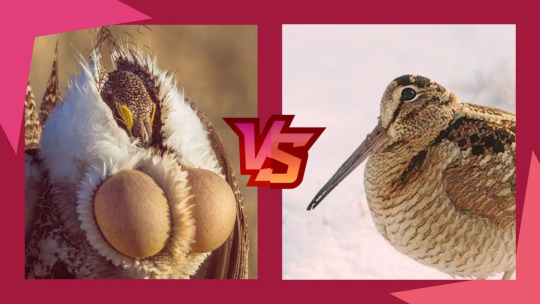
50 notes
·
View notes
Text
'Tis the season... for Timberdoodles!

What the heck is a Timberdoodle, also known as a Labrador twister, night partridge, or bog sucker?? Formally known as the American Woodcock (Scolopax minor), these funky little shorebirds live in the young forests of eastern North America.
In the early spring at twilight, if you're out by old fields or shrub-covered roadsides, especially near wooded areas, you may hear their distinctive nasally/buzzy "peent" call.
Look towards the west so that the brightest part of the sky is your backdrop, and you may get to see a tiny dark silhouette soaring upwards in a wide spiral, hundreds of feet into the air, while the bird's wings and feathers make a twittering, whistle sound. This is the mating display of the male American Woodcock, a sure sign that spring is around the corner.

I love these funky little guys so much. I went out this evening and got to see a couple of really amazing displays. There's still a lot of snow cover here so they were mostly hanging out in between the saplings by the stream right along the path. They were so close that one nearly hit my head as it flew out of the brush!
2 notes
·
View notes
Text
0 notes